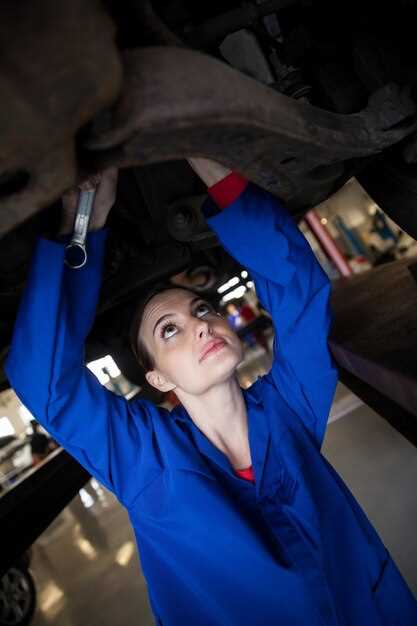
Achieving peak performance in drag racing requires meticulous attention to various tuning aspects, with Air-Fuel Ratio (AFR) being one of the most critical factors. The correct AFR not only enhances engine efficiency but also maximizes power output, directly influencing your race times. In this article, we will delve into effective tips for tuning AFR, ensuring your vehicle performs optimally on the strip.
Understanding the intricate balance between fuel and air is essential for any serious drag racer. An optimal AFR allows for complete combustion, translating into increased horsepower and better throttle response. Too rich or too lean a mixture can lead to performance losses and potential engine damage. Thus, knowing how to properly adjust your AFR is paramount for achieving a competitive edge.
We will explore various methods to monitor and adjust AFR, from utilizing wideband O2 sensors to making necessary adjustments in your engine management system. By following the comprehensive tips outlined here, you can elevate your drag racing performance and fine-tune your setup for the best possible results on race day.
Understanding the Importance of AFR in Drag Racing

Air-Fuel Ratio (AFR) is a critical parameter in achieving maximum performance and efficiency in drag racing. Understanding AFR allows racers to optimize engine output, enhance power delivery, and ensure that their vehicles run at peak potential during a race.
Optimal AFR Range: The ideal AFR for most drag racing applications typically falls within the range of 12.5:1 to 13.0:1 for gasoline engines. These values provide a balance between sufficient fuel delivery and complete combustion. Running too lean (higher AFR) can lead to engine damage due to high temperatures and knocking, while too rich (lower AFR) can cause excessive fuel consumption and decreased power.
Tuning Tips: To achieve the perfect AFR, tuning should be conducted based on various factors including engine setup, fuel type, and ambient conditions. Utilizing wideband oxygen sensors allows for precise measurement of the AFR. This data provides valuable insights that enable adjustments to be made dynamically during test runs.
Regularly monitoring AFR under different throttle positions and loads can reveal trends that influence performance. For instance, maintaining a slightly richer mixture at wide-open throttle can protect the engine from detonation while maximizing power. Additionally, conducting multiple runs and analyzing data can help refine the tuning process for each specific racing condition.
Conclusion: The significance of AFR in drag racing cannot be overstated. A well-tuned AFR not only improves performance but also enhances reliability. By following recommended tips and maintaining a keen awareness of AFR adjustments, racers can gain a competitive edge on the track, ensuring their vehicles are performing at their best.
Practical Steps for Adjusting AFR During Tuning
When tuning your vehicle for optimal drag racing performance, adjusting the Air-Fuel Ratio (AFR) is crucial. Here are some practical steps to effectively modify AFR during the tuning process.
1. Understand Your Target AFR: Different engines have different target AFR values depending on the fuel type and performance goals. For example, a typical gas engine may target 12.5:1 to 13.0:1 for maximum power. For your tuning, research the ideal AFR for your specific setup.
2. Use a Wideband O2 Sensor: Invest in a quality wideband oxygen sensor. This tool will allow you to accurately monitor your AFR in real-time, providing data essential for precise tuning. Ensure the sensor is placed correctly in the exhaust system to obtain accurate readings during runs.
3. Make Incremental Adjustments: When tuning, adjust the fuel map in small increments. This approach helps identify the effects of each change without overwhelming the system. For example, make a 0.1 adjustment to your fuel map and observe the impact on performance.
4. Monitor Engine Conditions: Always take into account engine temperature and load conditions while tuning. These factors significantly influence AFR. Perform runs under various conditions to gather comprehensive data on how your AFR behaves.
5. Analyze Data Log: After making adjustments, analyze the data logs collected during your runs. Look for trends in AFR readings and corresponding performance. A successful tuning session should show a correlation between optimal AFR values and improved performance metrics.
6. Perform Multiple Runs: To achieve the best results, conduct multiple runs. After each adjustment and analysis, run the vehicle again to see how changes affect performance. This repetition help you reach the most effective AFR for your engine.
7. Consult with Experts: If unsure about the adjustments or target AFR, seek advice from experienced tuners or forums dedicated to drag racing. Their tips and insights can provide valuable guidance to refine your tuning process.
By following these steps and regularly reviewing your adjustments, you will enhance your vehicle’s performance at the track while optimizing your AFR for drag racing.
Common Pitfalls in AFR Tuning and How to Avoid Them

Adjusting the air-fuel ratio (AFR) is crucial for optimizing drag racing performance, yet many tuners encounter common pitfalls that can hinder their efforts. Understanding these pitfalls and proactively addressing them can lead to improved results on the track.
1. Ignoring Engine Temperature Variations
One major mistake is failing to consider the effect of engine temperature on AFR. An engine running cooler may require a richer mixture, while a hotter engine typically benefits from a leaner setting. Always monitor your engine temperature during runs and adjust the AFR accordingly to maintain optimal performance.
2. Overlooking Fuel Quality
The quality of fuel can significantly impact AFR tuning. Poor quality or incorrect octane ratings can lead to uncontrolled combustion and affect your settings. Always use high-quality fuel suited for your engine, and verify its properties before making any adjustments.
3. Inadequate Testing Conditions
Making adjustments without consistent testing conditions can lead to inaccurate conclusions about your AFR settings. Ensure that you maintain the same environmental conditions, such as temperature and humidity, during testing sessions. This consistency will help you draw reliable comparisons across different tuning setups.
4. Neglecting Exhaust Gas Analysis
Relying solely on seat-of-the-pants feel rather than utilizing exhaust gas analysis can be misleading. A wideband O2 sensor is essential for accurately measuring AFR. By analyzing the exhaust gases, you can make informed tuning adjustments rather than relying on subjective feedback.
5. Not Considering Driveability
Focusing purely on peak performance can lead to a configuration that sacrifices drivability for marginal gains. An overly lean or rich mixture may lead to hesitation or poor throttle response. Prioritize balancing performance tuning with everyday drivability to ensure your car is responsive in all conditions.
6. Skipping the Break-In Period
Newly built engines or recently rebuilt components often require a break-in period prior to final tuning. Adjusting AFR too aggressively during this period can result in premature wear or failure. Allow the engine to settle before fine-tuning the AFR for optimal performance.
7. Failing to Monitor AFR Under Load
It’s critical to evaluate AFR under load, as tuning at idle or during light throttle may give a false sense of security. Make sure to assess AFR during full throttle operation since this is where performance will ultimately matter most. This comprehensive evaluation helps ensure that your tuning is effective across the entire operating range.
By recognizing these common pitfalls in AFR tuning and taking proactive measures to avoid them, you can enhance your drag racing performance, maximize efficiency, and achieve your racing goals.



